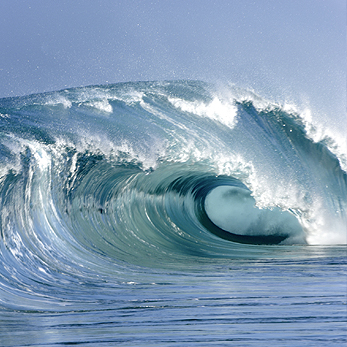Region II – Greater North Sea
In Region II, North Atlantic water mixes with freshwater run-off and river discharges within a roughly anti-clockwise circulation. Residual currents move southward along the east coast of the UK and northward along the continental west European coast.
In the Kattegat, salty oxygenated water flows into the Baltic Sea at depth and brackish water enters the North Sea in a surface counter-flow. Shallower areas of the North Sea (<30 m) are normally fully mixed by tidal action. In deeper areas, the upper 30 m are usually mixed by wind action.
With the exception of the deeper waters along the Norwegian coast, Region II corresponds to the cool-temperate Boreal biogeographic zone. The Channel forms the border with the Boreal-Lusitanean zone. Shallow rocky areas are colonised by extensive forests of kelp. Most of the seabed is covered in sandy sediment habitats which support large populations of flatfish. The Fladen Ground in the northern North Sea is a large area of muddy seabed with abundant Nephrops. The extensive estuaries with mudflats and salt marshes are globally important areas for migrating waterfowl and waders. The south-east of Region II comprises the Wadden Sea, the largest area of intertidal mudflat in the world with abundant shellfish, including mussel beds, and patches of seagrass. It is a crucial stopover for millions of migrating birds. In the north-west of the North Sea, offshore islands support major colonies of seabirds. Benthic and pelagic processes in the North Sea are strongly coupled and work together to make the Region highly productive. Region II has supported large commercial fish stocks, as well as substantial populations of key prey species such as sandeels that are the main food item for many seabirds. Region II contains a great number of habitats considered to be threatened or in decline, including most of the North-East Atlantic’s littoral chalk communities.

